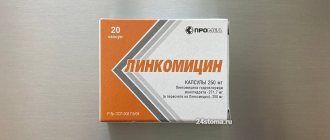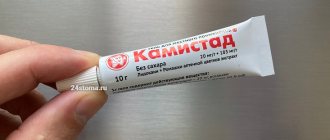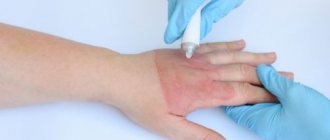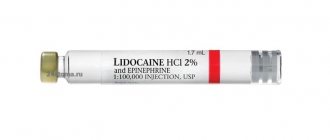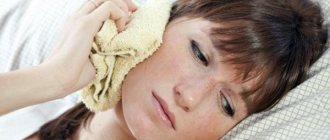Lincomycin is a broad-spectrum antibiotic. And if you take into account the diversity of microflora in the oral cavity, it becomes clear why dentists often prefer this particular drug.
The action of lincomycin is based on the suppression of the vital activity of pathogenic as well as opportunistic microorganisms. Including staphylococci, viridans streptococcus and many other microbes resistant to other antibiotics. It is characteristic that microbial resistance directly to lincomycin develops over a fairly long time.
pharmachologic effect
An antimicrobial agent that belongs to the group of lincosamides. Its bacteriostatic effect is noted in relation to a wide range of microorganisms. If higher doses of the drug are used, it may produce a bactericidal effect.
The mechanism of the antimicrobial effect of the antibiotic is as follows: under its influence, protein synthesis is inhibited in the cells of microorganisms. It has pronounced activity against gram-positive anaerobic and aerobic microorganisms. Resistance to the influence of the drug is demonstrated by strains of Enterococcus faecalis, as well as viruses, fungi, and protozoa. Most gram-negative microorganisms are also resistant to it. Slow development of resistance to this drug has been noted. Cross-resistance of this substance with clindamycin has been noted.
Lincomycin hydrochloride solution for intravenous injection 300 mg/ml amp 1 ml N10
Registration Certificate Holder
DALHIMFARM (Russia)
Dosage form
Medicine - Lincomycin
Description
Solution for intravenous and intramuscular administration
1 ml
lincomycin (in the form of monohydrate hydrochloride) 300 mg
1 ml - ampoules (5) - contour cell packaging (2) - cardboard packs. 1 ml - ampoules (10) - cardboard packs. 2 ml - ampoules (5) - contour cell packaging (2) - cardboard packs. 2 ml - ampoules (10) - cardboard packs.
Indications
Severe infectious and inflammatory diseases caused by microorganisms sensitive to lincomycin (especially Staphylococcus spp., Streptococcus spp., including microorganisms resistant to penicillins, as well as allergies to penicillins): sepsis, subacute septic endocarditis, lung abscess, pleural epiema, pleurisy, otitis, osteomyelitis (acute and chronic), purulent arthritis, postoperative purulent complications, wound infection, skin and soft tissue infections (pyoderma, furunculosis, phlegmon, erysipelas).
Contraindications for use
Hypersensitivity to lincomycin and clindamycin;
severe liver and/or kidney failure; pregnancy (except when necessary for health reasons), breastfeeding, newborns (up to 1 month). With caution
Fungal diseases of the skin, oral mucosa; vagina; myasthenia gravis; simultaneous use with drugs that block neuromuscular conduction; diabetes; moderate liver/renal failure; history of gastrointestinal diseases, especially colitis.
pharmachologic effect
Antibiotic of the lincosamide group. In therapeutic doses it acts bacteriostatically. At higher concentrations it has a bactericidal effect. Suppresses protein synthesis in microbial cells.
Active primarily against aerobic gram-positive bacteria: Staphylococcus spp. (including strains producing penicillinase), Streptococcus spp. (including Streptococcus pneumoniae /except Enterococcus faecalis/), Corynebacterium diphtheriae; anaerobic bacteria Clostridium spp., Bacteroides spp.
Lincomycin is also active against Mycoplasma spp.
Most gram-negative bacteria, fungi, viruses, and protozoa are resistant to lincomycin. Resilience is developed slowly.
Cross-resistance exists between lincomycin and clindamycin.
Drug interactions
When used simultaneously with penicillins, cephalosporins, chloramphenicol or erythromycin, antagonism of the antimicrobial effect is possible.
When used simultaneously with aminoglycosides, synergistic action is possible.
When used simultaneously with inhalation anesthesia or peripherally acting muscle relaxants, an increase in neuromuscular blockade is observed, up to the development of apnea.
Taking antidiarrheal drugs reduces the effect of lincomycin.
With simultaneous use of theophylline with lincomycin, an inhibitor of the P450 isoenzyme, the effect of theophylline may be enhanced, which may require a reduction in its dose.
Pharmaceutical interactions
Pharmaceutically incompatible with ampicillin, barbiturates, theophylline, calcium gluconate, heparin and magnesium sulfate.
Lincomycin is incompatible in the same syringe or dropper with kanamycin or novobiocin.
Dosage regimen
When taken orally by adults - 500 mg 3-4 times a day, intramuscularly - 600 mg 1-2 times a day. IV drip - 600 mg with an interval of 8 hours.
Children older than 1 month - IV drip at a dose of 10-20 mg/kg/day.
Side effect
From the digestive system:
nausea, vomiting, diarrhea, abdominal pain, anal itching, glossitis, stomatitis, jaundice, transient hyperbilirubinemia, increased activity of liver transaminases; with long-term use - gastrointestinal candidiasis, pseudomembranous colitis.
From the hematopoietic system:
reversible leukopenia, thrombocytopenic purpura, neutropenia, agranulotycosis, aplastic anemia and pancytopenia.
Allergic reactions:
itching, urticaria, rash, exfoliative dermatitis, vesiculobullous dermatitis, angioedema, anaphylactic shock, erythema multiforme, Stevens-Johnson syndrome, serum sickness.
From the genitourinary system:
impaired renal function (azotemia, oliguria, proteinuria), vaginitis.
From the senses:
tinnitus, vertigo.
Local reactions:
with intravenous administration - thrombophlebitis, with intramuscular administration - local irritation, pain, formation of compaction and sterile abscess at the injection site.
With rapid intravenous administration:
decreased blood pressure, dizziness, headache, drowsiness, general weakness, relaxation of skeletal muscles, respiratory arrest, cardiac arrest.
special instructions
To avoid the development of aseptic necrosis, it is better to administer it deeply intramuscularly. It cannot be administered intravenously without prior dilution.
If signs of pseudomembranous colitis appear (diarrhea, leukocytosis, fever, abdominal pain, excretion of blood and mucus with feces), in mild cases it is sufficient to discontinue the drug and prescribe ion exchange resins (cholestyramine), in severe cases, replacement of the loss of fluid, electrolytes and protein is indicated, vancomycin - orally, in a daily dose of 0.5-2 g (in 3-4 doses) for 10 days or bacitracin. The use of drugs that inhibit intestinal motility is contraindicated.
Lincomycin is not indicated for the treatment of meningitis because its concentration in the cerebrospinal fluid is insufficient to treat meningitis.
The use of lincomycin in patients with diabetes mellitus is not recommended unless alternative treatment is available, as there are no adequate data on the treatment of patients with endocrine or metabolic diseases.
T1/2 of lincomycin may be increased in patients with impaired liver and kidney function, so caution should be exercised when prescribing lincomycin to patients with moderate hepatic/renal impairment and monitor the concentration of lincomycin in the blood during therapy with high doses of lincomycin. In such patients, the possibility of reducing the frequency of drug administration should be considered.
Use in patients with liver failure is permissible only for health reasons. During long-term treatment, periodic monitoring of liver transaminase activity and renal function is necessary. If violations are detected, the possibility of discontinuing lincomycin should be considered.
As with the use of other antimicrobial drugs, when using lincomycin, especially long-term, it is possible to develop a secondary infection associated with the growth of drug-resistant microorganisms (especially fungi), to exclude and confirm which the patient’s condition should be re-evaluated. If a secondary infection occurs during therapy, the necessary measures should be taken to treat it. Lincomycin should be used with caution in patients with existing fungal diseases, and such patients should also be given antifungal therapy
If skin reactions and/or lesions of the mucous membranes develop, you should immediately consult a doctor before continuing treatment with lincomycin.
Allergic reactions have been reported with the use of lincomycin, which can progress to a life-threatening condition. In these cases, the use of lincomycin should be discontinued and appropriate treatment should be initiated.
Lincomycin has neuromuscular blocking activity and may increase muscle weakness in patients with myasthenia gravis. The use of lincomycin in patients with an established diagnosis of pseudoparalytic myasthenia gravis is not recommended
During long-term therapy, periodic blood tests are recommended.
Use during pregnancy and breastfeeding
Restrictions during pregnancy - Contraindicated. Restrictions when breastfeeding - Contraindicated.
Lincomycin crosses the placental barrier and is excreted in breast milk. Use during pregnancy is contraindicated. If it is necessary to use it during lactation, the issue of stopping breastfeeding should be decided.
Use for renal impairment
Restrictions for impaired renal function - Contraindicated. Use is contraindicated for severe impaired renal function.
Use for liver dysfunction
Restrictions for liver dysfunction - Contraindicated. Contraindicated for use in severe liver dysfunction.
Use in elderly patients
Restrictions for elderly patients - No restrictions.
Pharmacokinetics in elderly patients with normal liver and kidney function corresponds to the pharmacokinetics of adult patients.
Use in children
Restrictions for children - With caution.
Used in children older than 1 month.
Pharmacokinetics and pharmacodynamics
After oral administration, lincomycin hydrochloride is rapidly absorbed from the gastrointestinal tract. About 50% of the substance enters the systemic circulation. It is 75% bound to plasma proteins, the highest concentration is observed 2-4 hours after oral administration. The substance penetrates into fluids and organ tissues. The highest concentrations are observed in saliva, kidneys, genitals, liver, heart muscle, bone tissue, and bronchial secretions. Able to penetrate the blood-brain barrier, it is excreted in breast milk. Metabolism mainly occurs in the liver, it is excreted from the body in feces, a small amount is also excreted in the urine as metabolites and unchanged. The half-life from the body is 5-6 hours, it increases in people suffering from kidney disease.
Indications for use:
Bacterial infections caused by microorganisms sensitive to lincomycin (primarily Staphylococcus spp.
and
Streptococcus spp.
, especially microorganisms resistant to penicillins, as well as allergies to penicillins): sepsis, subacute septic endocarditis, lung abscess, pleural empyema, pleurisy, otitis, osteomyelitis (acute and chronic), purulent arthritis, postoperative purulent complications, wound infection, infections skin and soft tissues (pyoderma, furunculosis, phlegmon, erysipelas).
Indications for use of Lincomycin
Lincomycin tablets and Lincomycin injections are prescribed for the following diseases:
- diseases of the bones and joints of an infectious nature, the development of which was provoked by microorganisms sensitive to the drug ( osteomyelitis , septic arthritis );
- infectious diseases of the ENT organs and respiratory tract, provoked by sensitive microorganisms (used for sore throat , sinusitis , otitis , bronchitis , pneumonia , tracheitis , etc.);
- diseases of the skin and soft tissues, which are provoked by microorganisms sensitive to the product ( abscess , purulent wounds , mastitis , furunculosis , erysipelas , etc.).
- Lincomycin-AKOS is used externally for inflammatory and purulent diseases of soft tissues and skin, which were caused by microorganisms sensitive to the active ingredient.
Lincomycin is used in dentistry to treat purulent and infectious processes that occur in the oral cavity. In particular, Lincomycin in dentistry can be prescribed for the treatment of periodontitis , periodontitis , gingivitis , purulent abscesses , etc. Whether there are indications for the use of Lincomycin is determined by the dentist individually.
Release forms of lincomycin
Lincomycin is available in several forms:
- in the form of capsules,
- solutions for injections,
- in the form of an ointment.
Dentists often use it locally in the form of infiltration injections. This type of administration is preferable because lincomycin forms a drug depot in the bone tissue of the jaw, thereby prolonging and improving its effect.
But, despite this, the choice of one form or another of an antibiotic depends on the purpose, as well as the nature of the inflammation.
In addition to the above forms of lincomycin, the so-called diplen-denta-l, which are special self-adhesive films, are currently widely used. Most often they are used in the complex treatment of periodontitis, both local and generalized.
Side effects
When using Lincomycin in ampoules and capsules, patients may experience the following side effects:
- dysfunctions of the gastrointestinal tract ( vomiting , pain, nausea , stool disorders, increased activity of liver enzymes, esophagitis , hyperbilirubinemia );
- disorders of the hematopoietic process ( thrombocytopenia , agranulocytosis , neutropenia , pancytopenia );
- allergic processes ( skin itching , urticaria , rash , swelling erythema multiforme , anaphylactic shock );
- muscle weakness, headaches , arterial hypertension , dizziness .
If you experience any side effects, you should immediately tell your doctor about it.
Instructions for use of Lincomycin (Method and dosage)
If the patient has been prescribed Lincomycin injections, the instructions for use must be carefully followed during the treatment process. The drug in ampoules can be administered intravenously and intramuscularly. The daily dose of the drug for an adult patient should be no more than 1.8 g; if the disease is severe, the doctor can increase it to 2.4 g. The drug is administered three times a day, with the interval between injections being 8 hours. For children, the drug should be administered at a dose of 10-20 mg per 1 kg of body weight per day. Lincomycin is administered intravenously by drip; before administration, the solution is diluted with an isotonic sodium chloride solution.
For infectious diseases, Lincomycin capsules are also prescribed. The instructions for use recommend taking the drug in capsules for sore throat, as well as for sinusitis, either 1 hour before a meal, or 2 hours after taking it. The tablets cannot be chewed, they must be swallowed whole with plenty of liquid. The drug in tablets should be taken at regular intervals, dividing its daily dose. For children whose body weight exceeds 25 kg, the daily dose should be determined at the rate of 30 mg of the drug per 1 kg of weight.
When using the medicine in dentistry, as well as in the treatment of other infectious diseases, as a rule, Lincomycin is prescribed 500 mg three times a day. For severe symptoms, the dose can be increased to 500 mg of the drug four times a day. As a rule, the course of treatment lasts from 1 to 2 weeks. Sometimes the duration of treatment is up to 3 weeks (for example, with osteomyelitis ). If the patient has liver or kidney dysfunction, the dose should be adjusted individually.
Lincomycin ointment is prescribed externally. The instructions for use indicate that Lincomycin-AKOS ointment should be applied directly to the affected area in a thin layer. This procedure must be done 2-3 times a day.
Description:
Hard gelatin capsules No. 00 with a white body and cap. The contents of the capsules are granular powder of white or almost white color.
Pharmacotherapeutic group:
antibiotic - lincosamide.
ATX code:
J01FF02.
Pharmacological properties
Pharmacodynamics
:
Antibiotic produced by Streptomyces lincolnensis
, has a bacteriostatic effect. Suppresses bacterial protein synthesis due to reversible binding to the 50S ribosomal subunit and disrupts the formation of peptide bonds.
Sensitive in
vivo
:
Staphylococcus aureus
(penicillinase-producing and non-producing strains),
Staphylococcus epidermidis
,
Streptococcus pneumoniae
.
Sensitive in vitro
: aerobic gram-positive microorganisms -
Streptococcus pyogenes
,
Streptococcus spp
.
viridans
group ,
Corynebacterium diphtheriae
;
anaerobic gram-positive microorganisms - Propionibacterium acnes
,
Clostridium tetani
,
Clostridium perfringens
.
Effective against Staphylococcus
spp .
resistant to penicillin, tetracyclines, chloramphenicol, streptomycin, cephalosporins (30%
of Staphylococcus spp .
resistant to erythromycin are cross-resistant to lincomycin).
Does not affect Enterococcus
spp .
(including
Enterococcus faecalis
),
Neisseria gonorrhoeae
,
Neisseria meningitidis
,
Haemophilus influenzae
and other gram-negative bacteria, as well as fungi, viruses, protozoa. The optimum action is in an alkaline environment (pH 8-8.5). Resistance to lincomycin develops slowly. In high doses it has a bactericidal effect.
There is cross-resistance between lincomycin and clindamycin.
Pharmacokinetics:
Absorption - 30-40% (food intake slows down the rate and extent of absorption). The time to reach the maximum concentration of the drug in plasma (TCmax) is 2-3 hours. It penetrates well into the tissues of the lungs, liver, kidneys, through the placental barrier, and into breast milk. It is found in high concentrations in bone tissue and joints. Lincomycin penetrates the blood-brain barrier only slightly; in meningitis, permeability increases. However, the concentrations of lincomycin in the cerebrospinal fluid are insufficient for the treatment of meningitis.
Metabolized in the liver. It is excreted unchanged and in the form of metabolites through the gastrointestinal tract and urine. The half-life is approximately 5 hours.
In diseases of the liver and kidneys, the half-life increases, and there is significant individual variability in the dynamics of the concentration of lincomycin in the blood plasma. In case of renal failure (end stage), the half-life is 10-20 hours, in case of liver dysfunction - 8-12 hours.
Elderly patients
Pharmacokinetics in elderly patients with normal liver and kidney function corresponds to the pharmacokinetics of adult patients.
Interaction
If an antibiotic is used at the same time as non-steroidal anti-inflammatory drugs, the patient is more likely to develop respiratory failure and may experience respiratory arrest.
Taking Lincomycin and antidiarrheals simultaneously increases the likelihood of developing pseudomembranous colitis.
You cannot treat with the drug at the same time as using muscle relaxants and inhalational anesthetics.
Antibiotic absorption is reduced when taking adsorbent drugs simultaneously.
Lincomycin reduces the severity of the action of neostigmine , pyridostigmine , ambenonium .
The bacteriostatic effect of the antibiotic is reduced by simultaneous administration of Erythromycin and chloramphenicol .
Pharmaceutical incompatibility with kanamycin , novobiocin , and ampicillin .
Interaction with other drugs:
Antagonism - with erythromycin, chloramphenicol, ampicillin and other bactericidal antibiotics, synergism with aminoglycosides.
Antidiarrheal drugs reduce the effect of lincomycin (the interval between their use should be at least 4 hours).
Strengthens the effect of drugs for inhalation anesthesia, muscle relaxants and opioid analgesics, increasing the risk of neuromuscular blockade and respiratory arrest.
When used concomitantly with lincomycin, a P450 inhibitor, the serum concentration of theophylline may increase and this will require a reduction in its dose.
special instructions
If the patient has impaired renal or liver function, the single dose of the drug is reduced by 1/3-1/2, and the interval between administration is increased. With prolonged antibiotic treatment, the condition of the liver and kidneys must be monitored.
If the patient has renal or liver failure, the drug is contraindicated, for which Lincomycin can be prescribed exclusively for health reasons.
If a patient is prescribed Lincomycin tablets, which subsequently develops pseudomembranous colitis as a side effect, the drug is discontinued and Bacitracin or Vancomycin .
Externally, the ointment is carefully prescribed for dermatomycosis .
The solution should not be administered rapidly intravenously
Lincomycin
When using lincomycin, official national recommendations on the appropriate use of antibacterial drugs, as well as the sensitivity of pathogenic microorganisms in a particular country, should be taken into account.
Lincomycin should be prescribed with caution to patients with a history of gastrointestinal diseases, especially colitis.
Cases of pseudomembranous colitis have been reported that developed 2 months after taking antibacterial drugs that require the administration of ion exchange resins (cholestyramine); in severe cases, replacement of fluid, electrolyte and protein losses is indicated, vancomycin - orally, in a daily dose of 0.5-2 g ( in 3-4 doses) for 10 days or bacitracin. The use of drugs that inhibit intestinal motility is contraindicated.
Lincomycin is not indicated for the treatment of meningitis because its concentration in the cerebrospinal fluid is insufficient to treat meningitis.
The use of lincomycin in patients with diabetes mellitus is not recommended unless alternative treatment is available, as there are no adequate data on the treatment of patients with endocrine or metabolic diseases.
The half-life of lincomycin may be increased in patients with hepatic or renal impairment, so caution should be exercised when prescribing lincomycin to patients with moderate hepatic/renal impairment and monitor lincomycin blood concentrations during high-dose lincomycin therapy. In such patients, the possibility of reducing the frequency of drug administration should be considered.
Use in severe liver/renal impairment is contraindicated.
As with the use of other antimicrobial drugs, when using lincomycin, especially long-term, it is possible to develop a secondary infection associated with the growth of drug-resistant microorganisms (especially fungi), to exclude and confirm which the patient’s condition should be re-evaluated. If a secondary infection occurs during therapy, the necessary measures should be taken to treat it.
Lincomycin should be used with caution in patients with existing fungal diseases, and such patients should also be prescribed antifungal therapy.
Severe bullous reactions such as Stevens-Johnson syndrome have been reported with the use of lincomycin. Patients should be informed that if skin reactions and/or lesions of the mucous membranes develop, they should immediately consult a doctor before continuing treatment with lincomycin.
Allergic reactions have been reported with the use of lincomycin, which can progress to a life-threatening condition. In these cases, the use of lincomycin should be discontinued and appropriate treatment should be initiated.
Lincomycin has neuromuscular blocking activity and may increase muscle weakness in patients with myasthenia gravis. The use of lincomycin in patients with an established diagnosis of pseudoparalytic myasthenia gravis is not recommended.
Cases of neutropenia and/or leukopenia have been reported during treatment with lincomycin, so periodic monitoring of blood tests is recommended during therapy.
During long-term treatment, periodic monitoring of the activity of liver transaminases and kidney function is necessary. If violations are detected, the possibility of discontinuing the drug should be considered.
To avoid the development of aseptic necrosis, it is better to administer deeply intramuscularly. It cannot be administered intravenously without prior dilution.
Analogs
Level 4 ATC code matches:
Clindamycin
Lincomycin Hydrochloride
Analogues of the antibiotic Lincomycin are the drugs Lincomycin hydrochloride , Linkocin Clindamycin , Dalatsin C , Clindamycin-Norton , etc.
The use of other drugs by patients prescribed Lincomycin without the prior approval of a physician is strictly prohibited.
With alcohol
When discussing the compatibility of this antibiotic with alcohol, it should be noted that alcohol should not be consumed while being treated with this medicine. This combination will disrupt the absorption of the active substance of the drug in the gastrointestinal tract; under the influence of alcohol on the liver, an acceleration of the half-life of the active substance is observed. Consequently, the concentration of the drug in the body decreases, and its effectiveness decreases.
In addition, if a patient combines Lincomycin and alcohol, the consequences can be negative, as the likelihood of side effects increases.
Reviews about Lincomycin
Reviews of Lincomycin that users leave online indicate that this drug has a pronounced antimicrobial effect and allows you to quickly get rid of the unpleasant symptoms of infectious diseases. Those who have used Lincomycin injections also leave mostly positive reviews.
Both when administered intravenously and intramuscularly, the solution acts quickly and reduces the severity of symptoms. Reviews about the use of the product in dentistry often contain information that the drug helped to quickly get rid of purulent and inflammatory diseases.
Directions for use and dosage:
Orally, 1-2 hours before meals or 2-3 hours after meals, with plenty of water, 2-3 times a day with an interval of 8-12 hours. For adults and children over 12 years of age, the daily dose is 1-1.5 g, single dose is 0.5 g. For children from 3 to 12 years old (with body weight from 20 to 40 kg), the daily dose is 30-60 mg/kg.
The duration of treatment, depending on the form and severity of the disease, is 7-14 days (for osteomyelitis - 3 weeks or more).
For long-term or repeated courses, treatment should be carried out under monitoring of liver and kidney function.
Lincomycin price, where to buy
The price of Lincomycin in ampoules averages from 40 rubles for 10 ampoules of 1 ml.
The price of Lincomycin tablets ranges from 60 to 90 rubles for 20 pieces. You can buy the drug in capsules in Ukraine for an average of 25 UAH. (30 pcs.).
Lincomycin-AKOS ointment can be purchased at a price of 27 rubles.
- Online pharmacies in RussiaRussia
- Online pharmacies in UkraineUkraine
- Online pharmacies in KazakhstanKazakhstan
ZdravCity
- Lincomycin capsules 250 mg 20 pcs. Ozone LLC
126 rub. order - Lincomycin capsules 250 mg 20 pcs. BelmedpreparatyRUUE Belmedpreparaty
71 RUR order
- Lincomycin capsules 250 mg 20 pcs. Medicine production LLC
85 rub. order
- Lincomycin hydrochloride solution for injection. 30% 1ml 10 pcs. JSC Dalkhimfarm
116 RUR order
Pharmacy Dialogue
- Lincomycin hydrochloride (amp. 30% 1 ml No. 10) Belmedpreparaty
90 rub. order
- Lincomycin h/x (caps. 250 mg No. 20)Production of medicines
68 RUR order
- Lincomycin (caps. 250 mg No. 20) Belmedpreparaty
65 rub. order
- Lincomycin hydrochloride (amp. 30% 1 ml No. 10) DHF JSC
94 RUR order
show more
Pharmacy24
- Lincomycin-Darnitsa 30% 1 ml No. 10 solution
37 UAH. order - Lincomycin KMP 250 mg N30 capsules PAT "Kievmedpreparat", Ukraine
35 UAH order
- Lincomycin-Darnitsa 30% 2 ml No. 10 solution for injection
54 UAH order
- Lincomycin 300 mg/ml 1 ml No. 10 solution TOV" Pharmaceutical company "Zdorovya", Kharkiv, Ukraine
34 UAH order
- Lincomycin 0.25 N20 capsules PAT NEC "Borshchagivsky chemical-pharmaceutical plant", Kiev, Ukraine
32 UAH order
PaniPharmacy
- Lincomycin capsule Lincomycin capsules 0.25g No. 30 Ukraine, Kievmedpreparat OJSC
42 UAH order
- LINCOMYCIN ampoule Lincomycin solution for injection 30% ampoule 1 ml No. 10 Ukraine, Health LLC
35 UAH order
- Lincomycin ampoule Lincomycin solution for injection 30% ampoule 1 ml No. 10 Ukraine, Darnitsa ChAO
41 UAH order
- LINCOMYCIN ampoule Lincomycin solution for injection 30% ampoule 2ml No. 10 Ukraine, Health LLC
53 UAH order
- Lincomycin ampoule Lincomycin solution for injection 30% ampoule 2ml No. 10 Ukraine, Darnitsa ChAO
56 UAH order
show more
Release form:
Capsules 250 mg.
5 or 10 capsules in a blister pack made of polyvinyl chloride film and printed varnished aluminum foil.
20 capsules in polymer jars made of high-density polyethylene with screw-on lids (top layer of high-density polyethylene, inner layer of low-density polyethylene).
Each jar, 2 or 4 blister packs of 5 capsules each, or 1 or 2 blister packs of 10 capsules each, along with instructions for use, is placed in a cardboard pack.
